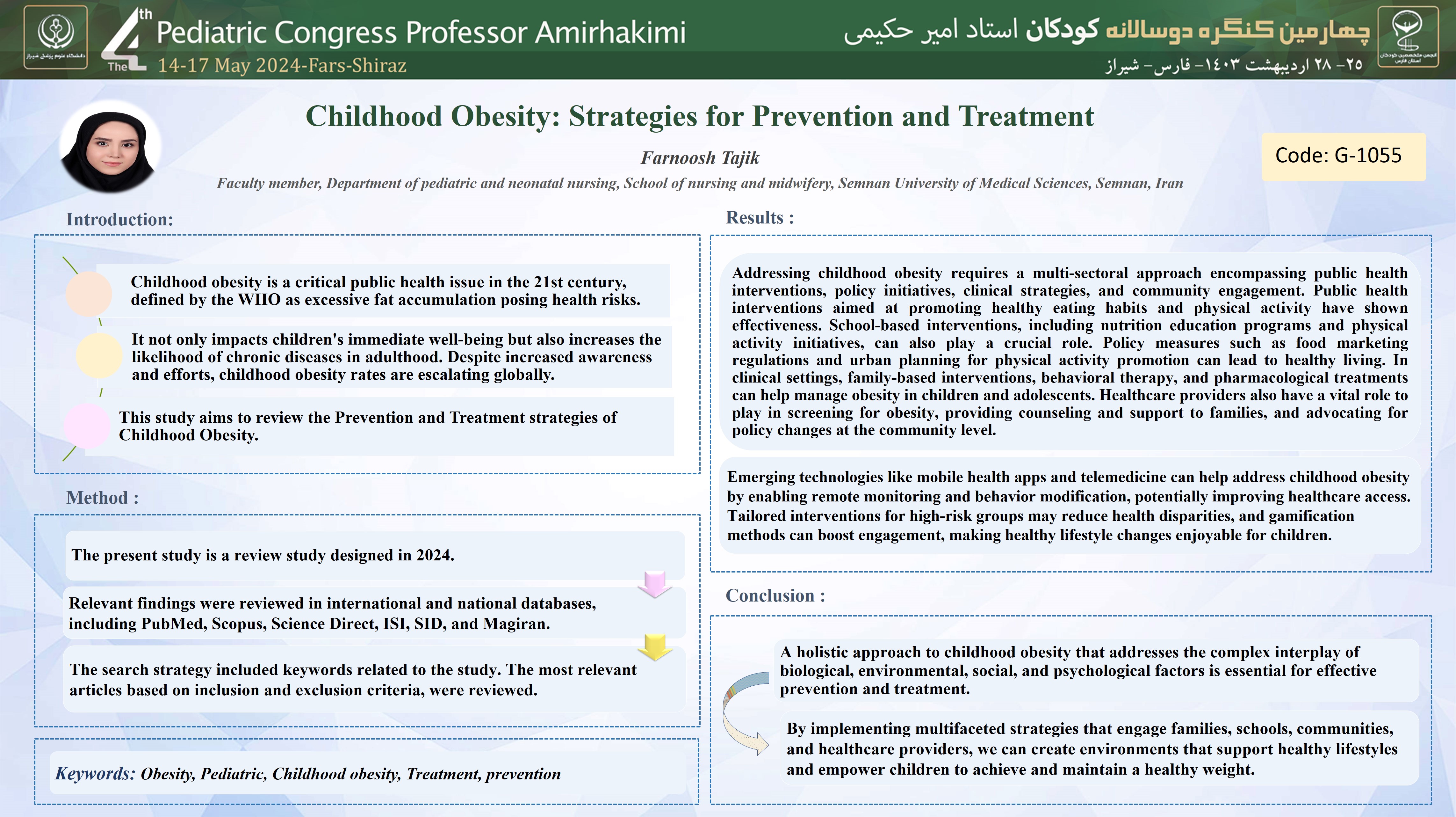رویکردهای پیشگیری و درمان چاقی در کودکان
کد: G-1055
نویسندگان: Farnoosh Tajik © ℗
زمان بندی: زمان بندی نشده!
دانلود: دانلود پوستر
خلاصه مقاله:
خلاصه مقاله
Introduction: Childhood obesity is a critical public health issue in the 21st century, defined by the WHO as excessive fat accumulation posing health risks. It not only impacts children's immediate well-being but also increases the likelihood of chronic diseases in adulthood. Despite increased awareness and efforts, childhood obesity rates are escalating globally. This study aims to review the Prevention and Treatment strategies of Childhood Obesity. Methods: The present study is a review study designed in 2024. Relevant findings were reviewed in international and national databases. The search strategy included keywords related to the study. The most relevant articles based on inclusion and exclusion criteria, were reviewed. Results: Addressing childhood obesity requires a multi-sectoral approach encompassing public health interventions, policy initiatives, clinical strategies, and community engagement. Public health interventions aimed at promoting healthy eating habits and physical activity have shown effectiveness. School-based interventions, including nutrition education programs and physical activity initiatives, can also play a crucial role. Policy measures such as food marketing regulations and urban planning for physical activity promotion can lead to healthy living. In clinical settings, family-based interventions, behavioral therapy, and pharmacological treatments can help manage obesity in children and adolescents. Healthcare providers also have a vital role to play in screening for obesity, providing counseling and support to families, and advocating for policy changes at the community level. Emerging technologies like mobile health apps and telemedicine can help address childhood obesity by enabling remote monitoring and behavior modification, potentially improving healthcare access. Tailored interventions for high-risk groups may reduce health disparities, and gamification methods can boost engagement, making healthy lifestyle changes enjoyable for children. Conclusion: A holistic approach to childhood obesity that addresses the complex interplay of biological, environmental, social, and psychological factors is essential for effective prevention and treatment. By implementing multifaceted strategies that engage families, schools, communities, and healthcare providers, we can create environments that support healthy lifestyles and empower children to achieve and maintain a healthy weight. Keywords: Obesity, Pediatric, Childhood obesity, Treatment, prevention
